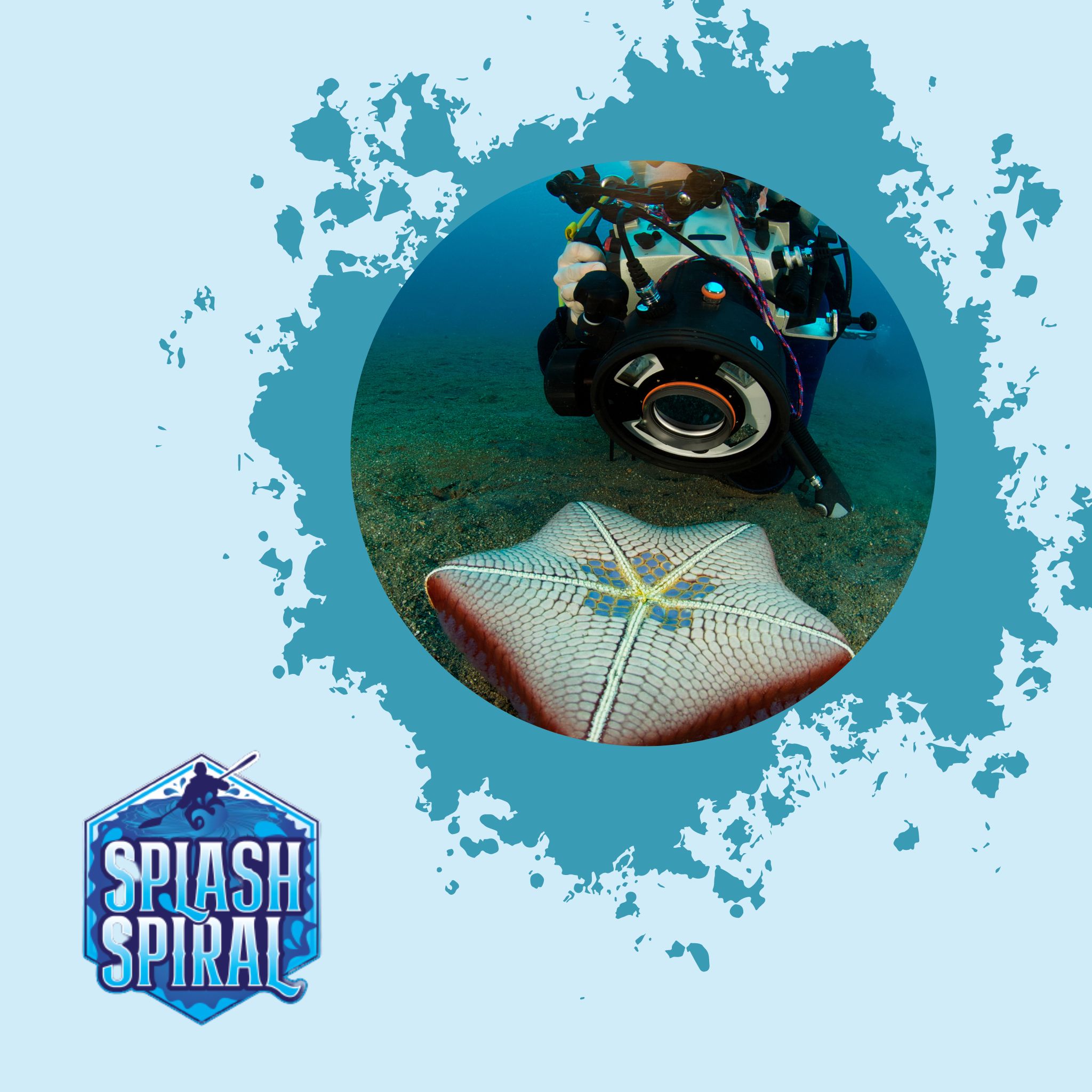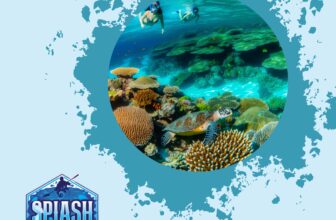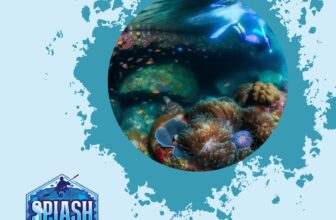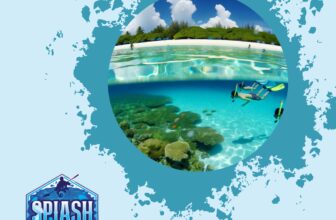
Muck diving is a unique and exciting type of scuba diving that has become increasingly popular with divers around the world. Unlike traditional reef diving, muck diving takes place in environments that are characterized by a lack of coral reefs or other striking geological features. Instead, divers explore sandy or muddy ocean floors that are home to an incredible array of unusual marine life.
Definition of Muck Diving
Muck diving is essentially any type of scuba diving that takes place in an environment lacking in coral reefs or other visually striking geological features. These areas are typically sandy, muddy, or rocky and may not be particularly picturesque at first glance.
However, upon closer inspection, divers will discover an amazing diversity of marine creatures such as octopuses, seahorses, frogfishes, and many more. One interesting thing about muck diving is how different it can be depending on where you do it.
Some muck dive sites might feature volcanic sand while others could have black mud bottoms. Despite these differences, muck dive sites share one common characteristic: they all host an abundance of fascinating and unique marine life.
Why Muck Diving is Fascinating
So what makes muck diving so captivating? The answer lies in the sheer number and diversity of animals that inhabit these environments. Because there are no reefs to steal the spotlight, smaller creatures like nudibranchs and shrimp take center stage during a muck dive.
The creatures found during a muck dive range from brilliantly colored to perfectly camouflaged – each one more mesmerizing than the last. In addition to showcasing fantastic wildlife sightings for divers’ fascination and enjoyment – not to mention great underwater photography opportunities – these dives often involve keen sight-seeing skills due to underwater visibility challenges.
Additionally, muck diving is an excellent way to learn about rare and endangered species that are seldom seen in other types of scuba diving environments. Overall, muck diving offers a unique and thrilling experience that should not be missed by any avid diver.
The Origins of Muck Diving
How it Started
Muck diving originated in the 1990s, primarily in Southeast Asia. Divers were initially drawn to the region for its beautiful coral reefs, but they soon recognized that there was an entirely different world right beneath their fins. They discovered that mucky environments were teeming with unique and unusual marine life, which included a wide range of critters such as nudibranchs, sea slugs, cuttlefish, and pipefish.
As muck diving became more popular within the diving community, it evolved into a specialized form of diving. Divers began seeking out areas with soft sediment and dark sand bottoms where they could find rare creatures that are typically found only in these types of environments.
Where it’s Popular
Today, muck diving is a global phenomenon with enthusiasts all over the world. In addition to Southeast Asia—the unofficial birthplace of muck diving—other popular destinations include Indonesia, Papua New Guinea, Fiji, Japan, Australia’s Great Barrier Reef region and Caribbean countries like Bonaire. Each location offers its unique blend of unusual marine life species to discover.
Some have large numbers of flamboyant cuttlefish or frogfish while others harbor rare species like mimic octopus or pygmy seahorses. With so many locations around the world offering fantastic muck diving opportunities proficient divers should have no trouble finding top-class sites to explore.
Overall muck diving has come a long way since its beginnings as a niche activity for adventurous divers seeking strange-looking creatures on sandy seafloors at night. It continues to evolve into an increasingly popular form of recreational scuba diving today with enthusiasts eager to explore new sites and discover new species unique to each location.
The Unique Environment of Muck Diving
Muck diving takes place in environments that are quite different from those of traditional coral reef diving. It is characterized by murky and sandy waters that often have low visibility, which can make it challenging for divers to navigate. This environment is created by a combination of factors including silt from rivers, sediment runoff from land, and dead plant and animal matter on the ocean floor.
Characteristics of the Muck Environment
Muck diving sites are typically found near estuaries, river mouths, or shallow bays where the water is not as clear as open ocean waters. The muddy or sandy bottom provides a safe haven for small creatures such as crustaceans, mollusks and macro invertebrates to hide amongst debris on the sea floor. This kind of marine habitat is often referred to as “critter” or “mucky” diving because it affords unique opportunities to observe fascinating marine life that are typically not found on coral reefs.
A typical muck environment usually has very few big fish species but instead supports an incredibly diverse array of small creatures like nudibranchs (colorful sea slugs), octopi hiding in small crevices and shells, shrimp (including peculiar dancing shrimp), crabs (like the porcelain crab) and seahorses. To maximize viewing opportunities many muck diving operators attract animals by placing discarded objects like tires or pipes on the bottom to create artificial reefs.
Types of Marine Life Found in Muck Diving Sites
Diving into a mucky environment offers an opportunity to see unique marine life up close that you’re unlikely to encounter anywhere else. In addition to nudibranchs, octopi, shrimp and crabs – there are also species like ghost pipefish which resemble floating sticks; frogfish which look more like moving rocks than actual fish; and the elusive mimic octopus, which has the amazing ability to change its shape, color and texture in order to blend in with its surroundings. Muck diving can also offer the chance to see larger marine creatures such as stingrays, barracuda and even small sharks.
However, it is important for divers to remember that the visibility in muck environments can be poor, so it is essential to remain aware of your surroundings at all times. Overall, exploring these unique underwater worlds promises an unforgettable experience for any diver looking for a new and exciting challenge.
The Best Destinations for Muck Diving
Muck diving is a niche activity, but it can be found in many locations around the world. Here are some of the top destinations for those looking to explore the fascinating world of muck diving.
Indonesia
Indonesia is home to some of the best muck diving sites in the world, with plenty of diverse marine life waiting to be discovered. One popular location is Lembeh Strait, where divers can find a variety of sea creatures including frogfish, seahorses, and octopuses. Another great spot is Ambon Bay, which has been dubbed “the critter capital of Indonesia” due to its abundance of rare and unusual marine life.
Philippines
The Philippines is another popular destination for muck diving enthusiasts. One standout location is Anilao, which boasts an impressive array of nudibranchs and other colorful sea slugs.
Divers can also find species such as pygmy seahorses and flamboyant cuttlefish here. Dumaguete City is another great option for muck diving, with rich biodiversity on display including ghost pipefish and frogfish.
Papua New Guinea
Papua New Guinea may not be as well-known as other destinations on this list, but it offers some truly unique experiences for muck divers. The Milne Bay area is one such location that offers up some incredible sights including mimic octopuses and blue-ringed octopuses. Muck diving in Papua New Guinea also offers a chance to see rare species like the rhinopias scorpionfish.
Overall, what makes these locations ideal for muck diving are their relatively untouched environments that allow unique species to thrive without human interference or damage from tourism activities. The diverse ecosystems make these areas popular not just for muck diving enthusiasts but also for scientific researchers and marine conservationists looking to study and protect these incredible creatures.
Equipment and Techniques for Muck Diving
Essential gear needed for a successful dive
Muck diving requires a specific set of equipment to ensure safety and success. A full-length wetsuit made of thick neoprene is necessary to protect against cuts and scrapes from the sharp rocks, shells, and coral that often litter the mucky terrain. A hood or cap will keep divers warm while providing extra protection for their heads.
High-quality fins are also important, as they allow divers to move smoothly through the muck without disturbing any sediment or marine life. A good dive light is essential for illuminating the dark crevices where many amazing creatures hide in muck diving sites.
Consider investing in a powerful, rechargeable flashlight with a long battery life. Additionally, a dive knife can come in handy to extricate oneself from any entanglements or cut away unwanted debris.
Tips and tricks for navigating the mucky terrain
Muck diving can be challenging due to its unique environment. Proper techniques can make all the difference between an enjoyable dive and one filled with frustration. One important trick is to move slowly and carefully while underwater, taking care not to disturb any sediment or marine life along the way.
It’s also helpful to focus on small details when diving in muck environments as this usually reveals amazing creatures hiding within nooks and crannies of the muddy substrate. This technique is called “macro photography” which involves using specialized lenses that magnify small objects so you will see even the tiniest details on tiny creatures living on mud.
Proper buoyancy control is vital when diving in mucky environments as it prevents accidental contact with both marine life and surrounding rocks / substrate which could cause injury or damage habitat. By following these tips, divers can get up close and personal with some of nature’s most fascinating creatures while minimizing the impact on their environment.
The Benefits of Muck Diving
How it Contributes to Marine Conservation Efforts
Muck diving has many benefits, not only for the divers themselves but for the marine environment as well. One of the most significant advantages is that it provides an opportunity to observe and study rare and unusual marine creatures that are not typically found in other types of diving sites.
This allows researchers to gather valuable information about these animals, which can be used to develop new conservation strategies. In addition, muck diving also helps raise awareness about the importance of marine conservation.
Many divers who participate in muck diving trips return home with a newfound appreciation for these delicate ecosystems and become advocates for their protection. This increased awareness can lead to more effective conservation efforts and greater public support for protecting our oceans.
Personal Benefits to Divers
Muck diving also offers many personal benefits to divers themselves. For one thing, it’s a great way to improve your diving skills, as navigating through a mucky environment requires more advanced techniques than other types of dives.
It also provides a unique sense of adventure and excitement, as each dive promises the possibility of discovering something new and unexpected. Perhaps most importantly, however, muck diving can be incredibly rewarding on a personal level.
The feeling of being completely immersed in nature while observing creatures you’ve never seen before is truly indescribable. Many divers describe muck diving as a “spiritual” experience that leaves them feeling connected to something greater than themselves – an experience that they carry with them long after they leave the water.
Overall, there are many benefits to muck diving – both for the environment and for individual divers. Whether you’re a seasoned diver or just starting out, this fascinating world is definitely worth exploring at least once in your life!
Challenges and Risks Associated with Muck Diving
While muck diving is a truly unique experience, it’s important to understand that it comes with its own set of challenges and potential risks. The murky waters, combined with an unfamiliar environment, can make for a particularly hazardous dive if you’re not prepared.
Safety Precautions to Take Before Diving into a Mucky Environment
Before you even enter the water for a muck dive, there are several safety precautions you should take. Firstly, ensure that your equipment is fully functional and that you understand how to use it correctly.
This includes your life support system (SCUBA), buoyancy compensator device (BCD), regulator, and any other tools or devices you plan on using. It’s also important to check in with local dive operators or research the area yourself beforehand.
Some muck environments may be subject to strong currents or other environmental factors that could impact your safety. Don’t be afraid to ask for guidance from experienced divers or seek out professional advice before diving into new territory.
Potential Hazards and How to Avoid Them
The murky nature of muck diving environments can make it difficult to spot hazards until they’re right in front of you. However, there are some common risks associated with muck diving that you can prepare for in advance. One such risk is the presence of venomous marine life like scorpionfish or lionfish.
These creatures may blend seamlessly into their surroundings but can deliver painful stings if provoked or accidentally touched. To avoid this risk, be mindful of where you place your hands and feet while navigating the terrain.
Another hazard commonly encountered during muck dives is sharp objects like broken glass or metal debris hiding within the sediment. It’s essential to wear sturdy gloves and ensure all cuts and abrasions are covered before entering the water.
Additionally, be cautious about where you place your gear or kick up sediment to avoid disturbing any hidden hazards. By taking the necessary safety precautions and being mindful of potential hazards, you can enjoy a safe and successful muck dive.
Conclusion: Why You Should Try Muck Diving at Least Once in Your Life
Muck diving is a unique and fascinating experience that every diver should try at least once in their life. The mucky environment may seem unappealing to some divers, but the incredible variety of marine life found in these areas makes it more than worth the effort. From tiny critters you may never have heard of to rare species you might only see once in a lifetime, muck diving offers a chance to explore a different side of the underwater world.
The Unique Experience and Benefits of Muck Diving
The benefits of muck diving go beyond just seeing interesting marine life. For one thing, it’s typically easier and less physically demanding than other types of diving, making it accessible even for beginners or those with physical limitations.
Because muck sites are often shallower than other dive sites, they offer longer dive times and more opportunities to explore. In addition to being fun and rewarding for divers, muck diving also plays an important role in marine conservation efforts.
Many species found in these environments are rare or endangered, so studying them can provide valuable insights into their behavior and ecology. And because muck sites are often located near areas heavily impacted by human activity (such as ports or coastal development), understanding how these creatures survive can help us protect them from further harm.
Encouraging Readers to Give It a Try!
If you’re curious about muck diving but not sure where to start, don’t worry – there are plenty of resources available online or through local dive shops that can help you get started. Whether you’re an experienced diver looking for a new challenge or a beginner looking for an exciting introduction to the underwater world, muck diving is definitely worth giving a try!
So why not take the plunge and explore this fascinating world for yourself? With its unique environment, incredible diversity of marine life, and potential for personal growth and environmental conservation, muck diving is an experience you won’t soon forget.







